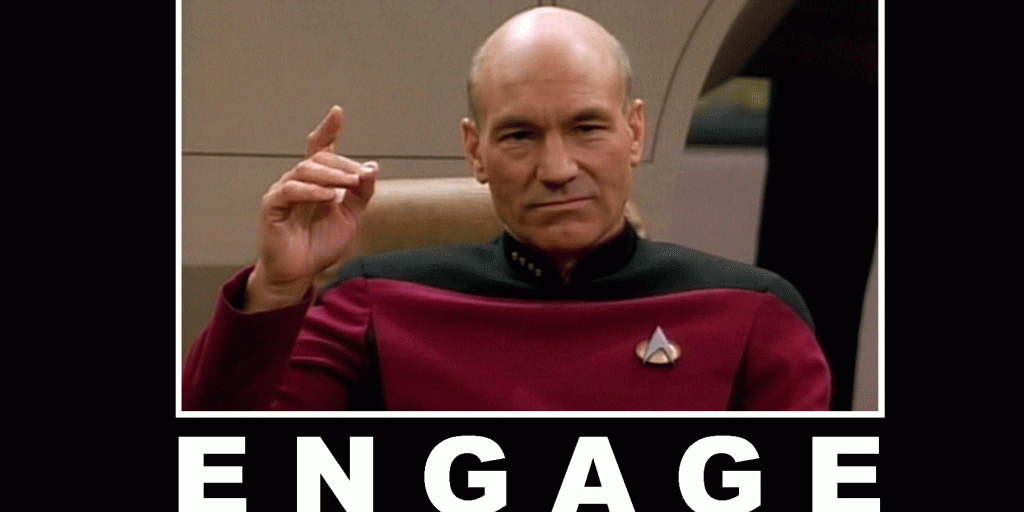“Engagement” is a rather loose term and one of the trendiest buzzwords. It is one of the things every marketer says they want to (know how to and can) generate for the brand they are marketing, and at the same time it is not easy to measure as it is not tangible. This is why, on most analytic tools “Engagement” is measured as the amount of people who follow you, talk about you, like your posts, comment on them or share them.
In other words, while it’s challenging, it is not impossible to quantify Engagement.
The real question though, is what happens after you got your numbers. What does it mean that you have X, or X times two followers, what does it mean that you got 100 likes to a specific post, or that 5 (or 50 or 500) people commented on it? And more importantly – does it even matter?
The real and most important metric, which is completely intangible and truly impossible to quantify is the Quality of Engagement.
To put it quite simply and very bluntly – 1000 followers who are not really interested in what you do or sell are not as good as 100 who are interested and who are potential paying customers. Moreover, irrelevant engagement (be it in follows, likes or comments) is often damaging.
Here’s why:
First, it messes up your stats. You think you’re doing well when in fact you’re not. You cannot easily detect the real relevant members of the community from the hodgepodge of irrelevant crowd. Inflated numbers lull you into a relaxed numb state, which only allows competitors to step in.
Second, it makes it harder to actually provide attention and service to your community. When your twitter account, for example, is flooded with new automated messages from random followers you’ve been hoarding (yes, hoarding!) using an automation software, you will surely miss some, if not most, of the really relevant messages requesting assistance or offering strategic partnership.
Third, the less relevant your following is, the more expensive campaigns will be to get your content and messaging out there and to get leads. It’s very simple – you’ll have to work harder to clean up your targeted audiences on any platform and/or end up having to pay for completely irrelevant likes and impressions because your audience includes loads of irrelevant followers.
Fourth, irrelevant inflated crowds include people who do not understand and/or do not really care about what you do or sell. This opens the way to reputation crises, to wasting time on explaining what you do or sell more than you need to, to paying more and working harder to make a profit.
I could go on and come up with more reasons but I think the above alone, are enough to make anyone understand that a new form of thinking and strategy are needed.
The process we call “Engagement Strategy” is, in fact, a new form of growth, marketing and business development strategies (all rolled into one), in which High Quality Engagement (HQE) is not just an end metric but first and foremost the guideline. It is the lighthouse that guides our way if you will.
The Engagement Strategy model / process is quite simple:
- Find your HQE Index – the HQE index is different from business to business, depending on various parameters. We start by defining the HQE index that is right for your company.
- Find your communities – define your ideal and optimal communities, where they are, who they are and what each of them looks like.
- Build your Engagement Scheme – Try to pinpoint all the touch points with each of the communities and where they also meet each other (not just your brand).
- Create your voice and tell your story – storytelling that matches the communities and HQE index means creating a unique voice and finding a broad common ground, bringing all of your communities together so they can not only support your brand, but also support each other.
- Choose the right tools, platforms and channels for your communities and stories.
- Decide on a timeline for your strategy, breaking the HQE index into milestones and goals.
- Measure your growth.
Engagement Strategy disrupts marketing as you know it because it completely changes the notion of a “funnel” and of “personas” or “audiences”. It looks at marketing, sales and business from a broader and less tangible point of view. We look at people and human behavior more than we look at cold hard numbers, which are often meaningless.
The notion of a marketing funnel and customer journey which is an organized process are old ones, born with the industrial revolution (somewhere in the 19th century!) and they are simply not relevant anymore in today’s digital and connected world, where people meet your brand in more places and ways you can possibly imagine.
Looking to Engagement as the guideline instead of looking at it as a metric puts things in a completely different perspective for marketing managers and CEOs.
========================================
“Engagement Strategy” is a marketing model created by Elinor Cohen, an experienced Community Manager and Community Based Marketing expert in 2013. Since first coming up with the model we have applied it to dozens of companies of various sizes, sectors and across many countries. We have been able to perfect it (and we still do, as we learn from each company we work with) and create a complete process for the strategy, finding your HQE Index and measuring the quality of your Engagement.






